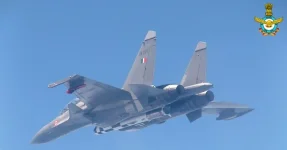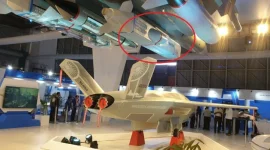- Views: 2K
- Replies: 11
The Indian Air Force (IAF) is pushing to acquire 114 new Rafale fighter jets directly from France, submitting a formal proposal to the Ministry of Defence (MoD).
This move signals a desire to bypass the long-delayed competitive bidding process, known as the Multi-Role Fighter Aircraft (MRFA) tender, in favour of a faster government-to-government deal to address urgent operational needs.
This push comes at a critical time. The IAF's combat readiness is strained, with its squadron numbers at a low of 30, far below the an authorised strength of 42. This gap has been worsened by the steady retirement of ageing MiG-21 and Mirage 2000 aircraft.
The Rafale's reputation within the IAF has been significantly bolstered by its proven performance, particularly during the high-stakes Operation Sindoor earlier this year, where the jets reportedly neutralized key targets without any losses.
This, combined with the Indian Navy's recent $7.5 billion (₹63,000 crore) agreement for 26 maritime Rafale-M variants, has made the aircraft the clear preference for the air force.
Speaking at a recent defence conclave, Air Chief Marshal A.P. Singh highlighted the need for rapid modernisation, stating, “Rafale remains a front-runner in our modernization matrix—it’s not just about numbers, but about absorbing proven capabilities swiftly to maintain our edge.
Sources suggest the MoD could approve the proposal by the end of this year, aiming for a contract in 2026 and initial deliveries by 2029.
Balancing Cost, Capability, and 'Make in India'
If approved, this acquisition would become India’s largest-ever defence deal, estimated to cost over ₹2 lakh crore and surpassing the 2016 deal for 36 Rafales. The proposal includes a substantial "Make in India" component, mandating up to 60% indigenization.While this promises a major boost to the domestic aerospace industry, it also raises critical questions about long-term strategic autonomy. The central debate is whether this massive investment will secure genuine, transformative technology or simply tie India into French supply chains for decades.
On the domestic manufacturing front, some progress is already visible. In June, Dassault Aviation and Tata Advanced Systems Limited (TASL) signed agreements to manufacture complete Rafale fuselages in Hyderabad—the first such production line outside of France.
This facility, expected to be operational by mid-2026, could produce 24 airframes annually for both Indian and export needs, potentially creating over 10,000 jobs.
However, critics remain skeptical, cautioning that France is unlikely to transfer its most sensitive "design authority." Retired Air Marshal Kapil Kak warned that without this, India risks becoming a "glorified assembler," vulnerable to geopolitical pressure, similar to concerns raised over the Su-30MKI program.
The Sticking Point: Engines and Source Codes
This potential deal aims to correct shortfalls from the 2016 agreement. It includes India-Specific Enhancements (ISE) for the F4 variant, such as an upgraded electronic warfare (EW) suite and integration of DRDO's Uttam AESA radar.Crucially, the package promises seamless integration of homegrown weapons like the Astra, Rudram, and BrahMos-NG missiles—a major point of friction in the previous deal.
While recent trials have validated interoperability, a key limitation remains: full access to the jet's electronic warfare source codes. This access is vital for the IAF to independently update the jet's defences against evolving threats, but it is a concession France has historically refused to grant.
The most significant technological barrier remains the M88 engine. While the deal's sheer size fuels hope that India could pressure France's Safran to co-develop a 110kN-class engine, experts are doubtful.
Core engine technology is considered a "red line" by France and is almost never shared. This reality is underscored by India’s separate selection of the US-made GE F414 engine for its Tejas Mk2 fighter.
A High-Stakes Financial Gamble
The primary concern is the program's immense financial burden. With a base cost of ₹1.75 lakh crore, projections indicate the deal could consume 40% of the IAF’s capital budget through 2035.This financial commitment threatens to "crowd out" other vital indigenous projects, most notably the Advanced Medium Combat Aircraft (AMCA), India's own fifth-generation stealth fighter, which is expected to fly its first prototype by 2028.
Defence economists warn that layering this purchase on top of the Navy's Rafale deal risks creating a "French monoculture," complicating logistics.
The Ministry of Defence now faces a difficult decision: secure the immediate, proven capability of the Rafale to fill a critical gap, or risk that short-term surge at the expense of India's long-term goal of a diversified and truly self-reliant fighting force.





